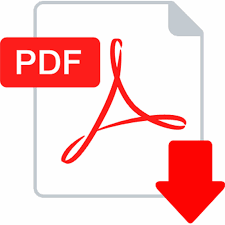
ТЕНДЕНЦІЇ РОЗВИТКУ СУЧАСНОГО МАРКЕТИНГУ
А. Ю. Аль-Тмейзі
DOI: 10.32702/2307-2105-2019.7.45
УДК: 368.212:629.33
А. Ю. Аль-Тмейзі
ТЕНДЕНЦІЇ РОЗВИТКУ СУЧАСНОГО МАРКЕТИНГУ
Анотація
У статті проаналізовано використання сучасних інтегрованих маркетингових комунікацій суб’єктами господарювання в умовах інформаційного суспільства як основної тенденції розвитку сучасного маркетингу. Розглянуто ефективні плани інтегрованих маркетингових комунікацій спрямовані на надання відповідних, послідовних та безкоштовних повідомлень клієнтам. Доведено, що метою маркетингових комунікацій є створення обізнаності, надання знань і створення сприятливих вражень для досягнення бажаної позиції у свідомості клієнтів. Зрештою, вони призначені для переміщення потенційного клієнта через воронку до купівлі товару чи послуги. Проаналізовані складові мультканальності маркетингу на основі використання здобутків ери діджиталізації. Використання найрізноманітніших інструментів просування дають компанії більше клієнтів і збільшують впізнаваність бренду, а основною перевагою є визначена ціна за таке просування. Також варто відмітити, що інвестування в один канал може збільшити інтерес до бізнесу через інші канали.
Ключові слова: інтегровані маркетингові комунікації; маркетингові інструменти; цифрові технології; омніканальність; мультиканальний маркетинг
Література
1. Andrews, J. C., & Shimp, T. A. (2017). Advertising, promotion, and other aspects of integrated marketing communications. Nelson Education.
2. Camilleri, M. A. (2018). Integrated marketing communications. In Travel marketing, tourism economics and the airline product (pp. 85-103). Springer, Cham. DOI: 10.1007/978-3-319-49849-2_5
3. Finne, Å., & Grönroos, C. (2017). Communication-in-use: customer-integrated marketing communication. European Journal of Marketing, 51(3), 445-463. DOI: 10.1108/EJM-08-2015-0553
4. Key, T. M., & Czaplewski, A. J. (2017). Upstream social marketing strategy: An integrated marketing communications approach. Business Horizons, 60(3), 325-333. DOI: 10.1016/j.bushor.2017.01.006
5. Manser Payne, E., Peltier, J. W., & Barger, V. A. (2017). Omni-channel marketing, integrated marketing communications and consumer engagement: A research agenda. Journal of Research in Interactive Marketing, 11(2), 185-197. DOI: 10.1108/JRIM-08-2016-0091
6. Ots, M., & Nyilasy, G. (2017). Just doing it: theorising integrated marketing communications (IMC) practices. European Journal of Marketing, 51(3), 490-510. DOI: 10.1108/EJM-08-2015-0595
7. Patti, C. H., Hartley, S. W., van Dessel, M. M., & Baack, D. W. (2017). Improving integrated marketing communications practices: A comparison of objectives and results. Journal of marketing communications, 23(4), 351-370. https://doi.org/10.1080/13527266.2015.1027251
8. Tetiana, H., Inna, N., Walery, O. K., Olga, G., & Svetlana, D. (2018). Innovative model of economic behavior of agents in the sphere of energy conservation. Academy of Entrepreneurship Journal, 24(3), 1-7. URL: https://www.abacademies.org/articles/Innovative-model-of-economic-behavior-of-agents-in-the-1528-2686-24-3-163.pdf
Alina Al-Tmeizi
MODERN MARKETING DEVELOPMENT TRENDS
Summary
The article analyzes the use of modern integrated marketing communications by business entities in the information society as the main tendency of modern marketing development. The purpose of the article is a systematic research, a critical assessment of the theoretical provisions and the current practice of trends in the development of modern marketing in an information society. Multi-channel marketing is the practice of using multiple channels to attract customers. Also known as cross-channel marketing, multi-channel marketing allows customers to easily complete their desired conversions on whatever medium is most convenient for them. Multichannel marketing allows the user to decide, giving them a choice of how to use a particular service or product. Effective integrated marketing communications plans are designed to provide relevant, consistent, and free communications to customers. It is proved that the purpose of marketing communications is to create awareness, provide knowledge and create favorable impressions to achieve the desired position in the minds of customers. After all, they are intended to move a potential customer through a funnel to purchase a product or service. The components of multichannel marketing based on the use of the achievements of the digitization era are analyzed. The use of a variety of promotion tools give the company more customers and increase brand awareness, and the main advantage is the priced price for such promotion. It should also be noted that investing in one channel can increase business interest through other channels. Marketing managers need to find the best way to allocate financial resources to support their IMK strategy and coordinate their spending so that all customer touch points receive consistent messages.
Keywords: integrated marketing communications; marketing tools; digital technologies; omnicancy; multichannel marketing
References
1. Andrews, J. C. and Shimp, T. A. (2017), Advertising, promotion, and other aspects of integrated marketing communications, Nelson Education.
2. Camilleri, M. A. (2018), “Integrated marketing communications”, Travel marketing, tourism economics and the airline product, pp. 85-103, Springer, Cham. DOI: 10.1007/978-3-319-49849-2_5
3. Finne, Å. and Grönroos, C. (2017), “Communication-in-use: customer-integrated marketing communication”, European Journal of Marketing, vol. 51(3), pp. 445-463. DOI: 10.1108/EJM-08-2015-0553
4. Key, T. M. and Czaplewski, A. J. (2017), “Upstream social marketing strategy: An integrated marketing communications approach”, Business Horizons, vol. 60(3), pp. 325-333. DOI: 10.1016/j.bushor.2017.01.006
5. Manser Payne, E. Peltier, J. W. and Barger, V. A. (2017), “Omni-channel marketing, integrated marketing communications and consumer engagement: A research agenda”, Journal of Research in Interactive Marketing, vol. 11(2), pp. 185-197. DOI: 10.1108/JRIM-08-2016-0091
6. Ots, M. and Nyilasy, G. (2017), “Just doing it: theorising integrated marketing communications (IMC) practices”, European Journal of Marketing, vol. 51(3), pp. 490-510. DOI: 10.1108/EJM-08-2015-0595
7. Patti, C. H. Hartley, S. W. van Dessel, M. M. and Baack, D. W. (2017), “Improving integrated marketing communications practices: A comparison of objectives and results”, Journal of marketing communications, vol. 23(4), pp. 351-370. https://doi.org/10.1080/13527266.2015.1027251
8. Tetiana, Hilorme. Inna, Nazarenko Walery, Okulicz-Kozaryn Olga, Getman and Svetlana, Drobyazko (2018), “Innovative model of economic behavior of agents in the sphere of energy conservation”, Academy of Entrepreneurship Journal, vol. 24(3), pp. 1-7, available at: https://www.abacademies.org/articles/Innovative-model-of-economic-behavior-of-agents-in-the-1528-2686-24-3-163.pdf (Accessed 10 July 2019).
№ 7 2019
Дата публікації: 2019-07-30
Кількість переглядів: 17329

